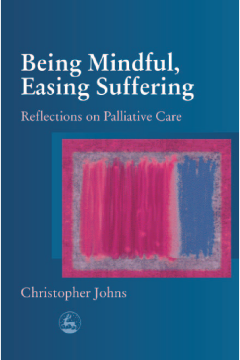
Additional Information
Book Details
Abstract
Written by an experienced palliative care nurse, trainer, and complementary therapist, Being Mindful, Easing Suffering is an essential resource for professionals working with the seriously ill and the dying. Chris Johns describes how he has combined traditional medical, and more reflective models in his palliative practice, enabling him to work mindfully to alleviate physical and non-physical pain and suffering throughout the health-illness cycle. With reference to ideas from Buddhist philosophy around compassion and reflective knowing, this important book shows how the core task of those working in palliative care is to nurture the spiritual growth and development of their patients and, in turn, themselves.
`There is much to learn about easing suffering from John's reflective narrative. The journal is both evocative and illuminating. The attention given to individuals patients experiences and to the manner in which practitioners can help to relieve suffering is the main strength of the book'
Journal of Advanced Nursing
`Chris Johns has produced a book that is, I believe, unique in the field of nursing practice. In his personal and philosophical reflections on palliative care he pin-points…the very essence of nursing practice… This text should be at the heart not only of nursing but also the way in which we should live our lives.'
Denise Rankin-Box, Editor in Chief, Complementary Therapies in Nursing and Midwifery
`Christopher Johns has written an exquisite book detailing the experience of being a palliative care nurse. He has taken a unique approach in chronicling his practice through a journal, which serves a model for the reader on reflective practice. Johns' book is insightful on several levels. He offers a poignant book about the practice of palliative care, which will certainly evoke deep feelings and memories for many who have cared for dying patients. The narrative serves a model for reflective practice for students and practitioners alike who wish to explore this method of research and self-inquiry. John also, as the postscript writer describe, addresses some of the lessons that can be learned in palliative care work, the importance of living in the moment, and acknowledgement of the constantly changing nature of life.'
Mary L. Wilby, MSN, CRNP, La Salle University School of Nursing
Christopher Johns is a teacher, researcher, nursing practitioner, reflexologist, therapeutic touch practitioner and a reader in Advanced Nursing Practice, at the University of Luton. He has published extensively on palliative care and reflective practice and caring theory.
Table of Contents
| Section Title | Page | Action | Price |
|---|---|---|---|
| Acknowledgement viii | |||
| Introduction xi | |||
| 1. Brief History of Charcoal 1 | |||
| 1.1 General background 1 | |||
| 1.2 Charcoal in Brazil 2 | |||
| 2. The Charcoal-based Industrial Sector 6 | |||
| 2.1 Main features of the iron and steel industry 6 | |||
| 2.2 Overall charcoal consumption in the pig-iron and other | |||
| industrial sectors 8 | |||
| 3. Raw Material for Charcoal Production: From Native Forests | |||
| to Forest Plantations 10 | |||
| 3.1 History of forest plantations 10 | |||
| 3.2 Silvicultural aspects 13 | |||
| 3.3 Eucalyptus varieties and wood densities 14 | |||
| 3.4 Seedling generation and planting methods 15 | |||
| 3.5 Tree spacing and cutting age 15 | |||
| 3.6 Biodiversity preservation and insect control 16 | |||
| 3.7 Yields 17 | |||
| 3.8 Afforestation programmes for charcoal production in Minas | |||
| Gerais 18 | |||
| 3.9 Socio-economic factors 20 | |||
| 3.10 Legal aspects of afforestation 21 | |||
| 4. Technical Aspects of Charcoal Production 22 | |||
| 4.1 Fundamentals 22 | |||
| 4.2 Charcoal-making technology 23 | |||
| 4.3 Masonry kilns in commercial charcoal production 24 | |||
| 4.4 Material balance and charcoal yield 27 | |||
| 4.5 Charcoal versus coke 29 | |||
| 5. Charcoal Production Costs 31 | |||
| 6. The Future Challenge: The Need for Sustainable and Rational | |||
| Use of Native Forests 35 | |||
| 6.1 Carajas 35 | |||
| 6.2 The sustainable forest management concept 37 | |||
| 6.3 Sustainable Forest Management Project of 'Fazenda' | |||
| Descoberta 39 | |||
| 7. Environmental Factors in Charcoal Production and Use 44 | |||
| 7.1 General aspects 44 | |||
| 7.2 Coke versus charcoal 44 | |||
| 7.3 The CO2 factor 47 | |||
| 8. General Perspectives 48 | |||
| 8.1 General considerations 48 | |||
| 8.2 Research and development needs 50 | |||
| 8.2.1 Forestry 51 | |||
| 8.2.2 Charcoal production 51 | |||
| 8.3 By-products recovery 52 | |||
| 9. Summary and Conclusions 56 | |||
| 9.1 Charcoal production 56 | |||
| 9.2 Charcoal costs 57 | |||
| 9.3 Sustainable Forestry Management Projects (SFMPs) 58 | |||
| 9.4 Environment 58 | |||
| 10. References 61 |
